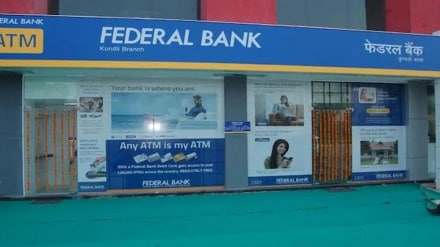Indian banks have experienced a significant and strategic shift in their advertising and publicity (ad) expenditure. This shift underscores the evolving perspective of financial institutions towards brand-building and customer acquisition, marking a crucial trend in the industry. Over the past five years, the 11 large-cap banks across the public and private sectors, which have published their FY25 annual report, have witnessed a substantial surge in ad spends. This surge, amounting to a 2.5 times (160%) increase, highlights their determination to strengthen their presence in a competitive and digitally fragmented market.
For FY25, ICICI Bank and Kotak Mahindra Bank emerged as the highest spenders with Rs 1,952 crore and Rs 1,009 crore, respectively, followed by HDFC Bank at Rs 592 crore, suggesting continued aggression in outreach. This spending spike wasn’t limited to private players; even state-owned banks like Bank of Baroda (Rs 226 crore), Canara Bank (Rs 143 crore) and Punjab National Bank (Rs 124 crore) registered significant jumps in ad budgets. Interestingly, State Bank of India and Union Bank of India bucked the trend, trimming their promotional spend marginally to Rs 509 crore (Rs 532 crore in FY2024) and Rs 124 crore (Rs 142 crore), respectively. For FY25, the 11 banks on a yearly basis witnessed a jump of 14% in their ad spends.
The Full-Funnel Approach: From Brand Awareness to Conversion
“The role of marketing and advertising in the banking sector is undergoing a significant transformation. It’s no longer just about creating brand awareness, but about owning the full funnel-from building awareness and consideration to driving conversion,” said Rohit Bhasin, Chief Marketing Officer at Kotak Mahindra Bank. This shift challenges the notion that advertising spends have surged post-COVID, emphasising the adoption of a full-funnel strategy and the measurement of marketing effectiveness by business outcomes, such as account openings or credit card sales.
Drawing from his Unilever experience, Bhasin notes that while FMCG marketing traditionally focused on demand creation, banking now blends awareness and conversion, blurring the lines between marketing and distribution. Kotak’s mass campaigns, such as Active Money, target a broad consumer base, while niche campaigns like Solitaire are tailored for affluent customers. “Solitaire is targeted towards affluent customers… you’ll really do affinity matching and serve them digitally,” adds Bhasin.
Banks are pursuing affluent clients to gain a larger share of customers’ wallets and sticky money (CASA). Last week, ICICI Bank increased its savings bank minimum deposit to Rs 50,000 crore, as against the previous Rs 10,000. Similarly, the Kotak Solitaire program, launched last month, is an invite-only, premium banking program designed for high-net-worth individuals and families. It offers exclusive privileges, personalised services, and advanced investment tools. The total relationship value calculated across all family accounts is Rs 75 lakh for salaried individuals and Rs one crore for self-employed individuals.
“Our 360-degree approach, including ATL initiatives, brand ambassadors, and micro-marketing efforts, has led to triple-digit growth in Savings Accounts and improved conversions,” said MVS Murthy, CMO at Federal Bank. In the last five years, Federal Bank’s ad and publicity spending has jumped to Rs 51 crore for FY25 from Rs 9 crore in FY20. The spends helped the Kerala headquarter bank with a facelift for existing branches and their expanding presence in newer markets like North East, UP, and Delhi while strengthening their foothold in existing markets. “A 100 new branches are on the horizon and we are optimistic about growing our franchise,” added Murthy, further adding that “from a Federal Bank’s perspective, the glass is half full yet brimming with optimism for growth of the franchise.” For FY25, Federal Bank’s revenue and profit per ad rupee stood at Rs 187 and Rs 80, significantly lower when compared to FY21, which recorded a revenue and profit per ad rupee at Rs 602 and Rs 173, respectively.
Declining Efficiency Amidst Rising Budgets
Looking over a two-year horizon (FY2024 to FY2025), the trend reflects a consistent increase in ad budgets but declining efficiency. In contrast, the five-year trend (FY2021 to FY2025) reveals a steeper story with efficiency consistently declining despite rising spending. Indian Bank’s revenue per ad rupee fell 51%, from Rs 1,156 to Rs 570, while Bank of India’s dropped 67%, from Rs 1,893 to Rs 617. HDFC Bank, once a benchmark of cost-effective marketing, saw its ratio plunge 70% over the same period. Canara Bank, Union Bank, Punjab National Bank and SBI all displayed similar erosion. Notably, Kotak Mahindra Bank posted the sharpest decline, down 81% in efficiency over five years.
FY25 marked a turning point where Indian banks embraced advertising as a serious lever for growth. With brand visibility increasingly vital in both retail and corporate segments, banks must now reevaluate not just how much they spend, but how effectively those rupees convert into enduring relationships and revenue. “Marketers need to come from just advertising makers to becoming growth marketers… understanding the end-to-end shopping funnel and measuring the effect of your marketing at every consumer touch point,” adds Bhasin.
